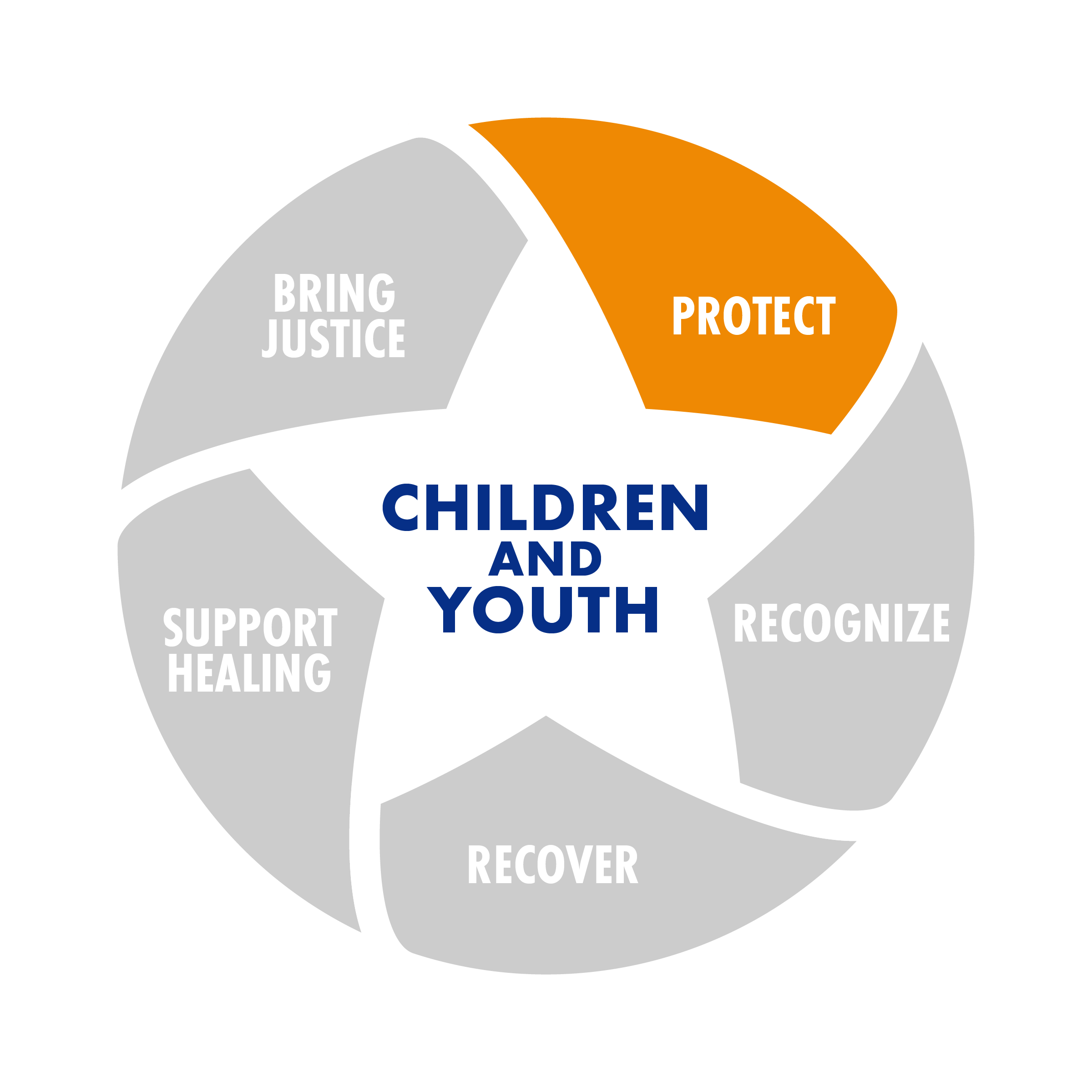Child Sex Trafficking - Protect
 All children are at risk of sexual exploitation. Children are inherently vulnerable, and exploiters prey upon vulnerability.
All children are at risk of sexual exploitation. Children are inherently vulnerable, and exploiters prey upon vulnerability.
While certain risk factors are common among victims of child sex trafficking — such as abuse or neglect, homelessness, frequently running away, juvenile justice involvement, gang involvement, drug or alcohol addiction — all children are at risk.
Exploiters can often be the very people our children are taught to trust: friends, family members, mentors, or coaches. But exploiters are increasingly contacting victims online. Exploiters use the internet to lure, groom and victimize children while buyers use technology to anonymously find and purchase sex. As youth spend more time on the internet, messaging apps, social media, and online games, the crime of online enticement continues to grow. Online enticement involves communicating with a child via the internet with the intent to commit a sexual offense or abduction, and includes the emerging crime of sextortion, in which exploiters blackmail youth to send them sexual images or to engage in sexual conduct online and/or in person. Sextortion victims are often targeted by someone they met online who had obtained a sexual image from them through deceit, coercion, or some other method.
CSTT Strategies to Protect Children
- Providing stakeholders with information on research-based, age-appropriate prevention education;
- Supporting targeted interventions to reduce the vulnerability of high-risk youth;
- Equipping adults with the knowledge and skills to recognize risks and respond effectively.
How You Can Help
- Ask your child’s school what policies, training, and prevention education are in place to address abuse, sexual exploitation, and trafficking
- Become a CASA volunteer or find a mentoring opportunity in your community
- Educate yourself and your family on digital safety
- Join the Network of Nurture
Resources
- Love146 Caregiver Guide
- National Center for Missing & Exploited Children
- National Center on Sexual Exploitation
- Project Protect Our Children
- Unbound – Keeping Students Safe
